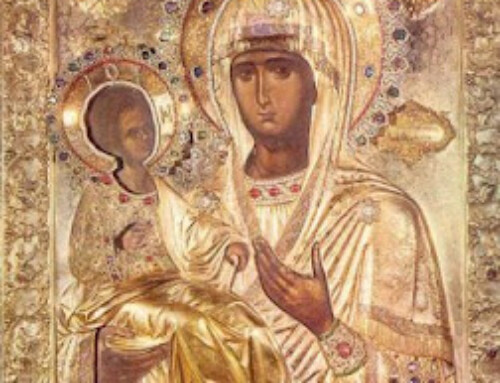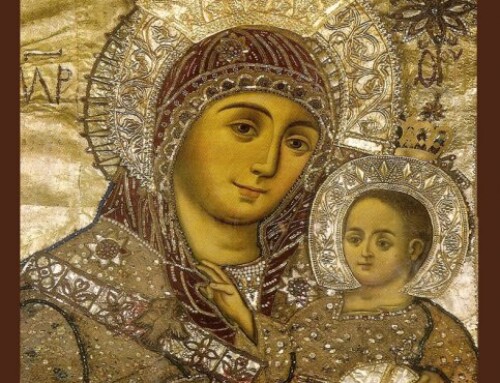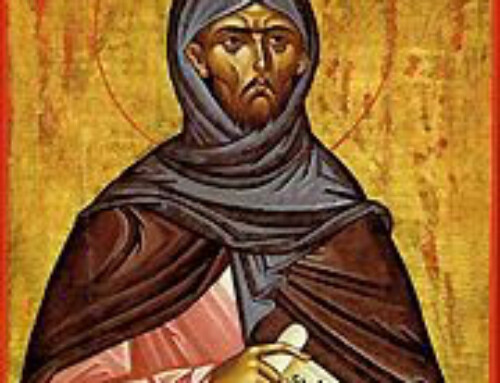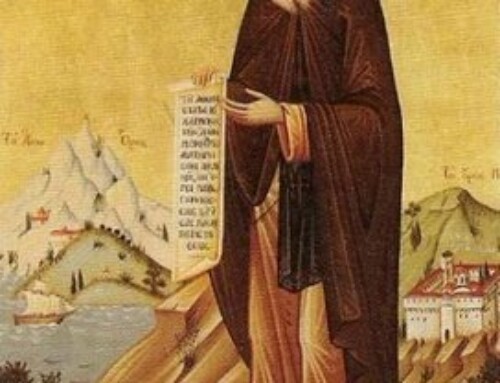A Cloud of Witnesses
 Saints and Martyrs
Saints and Martyrs
From The Holy Land
By
Bishop Demetri M. Khoury
INTRODUCTION
According to the Church Fathers, a saint is simply a Christian who has received an immensely valuable gift from God—the gift of being able to strive toward the “spiritual perfection” of Jesus Christ. Although human beings are imperfect and can never hope to actually achieve such infinite perfection, a few individuals in each historical epoch managed through the grace of God to rise to such a level of spiritual holiness that they were canonized, formally declared to be saints. Canonization occurs when the Holy Church determines that the righteousness of a Christian’s life warrants this special elevation.
Only a very few human beings will ever achieve this sublime status in the life of the Church. Yet amazingly enough the New Testament calls upon each one of us to become saints! How? Simply by doing our very best, day in and day out, to meet the key test of sainthood by struggling to imitate the spiritual perfection of the Son of God.
The great saints of the Holy Land struggled to imitate the life of Christ, and in doing so their lives took many forms, depending on their individual temperaments and their local circumstances. The Holy Church recognizes these differences by classifying the various modes of sainthood in broad categories. The following list is taken from the Synaxarion of the Patriarchate of Jerusalem.
The Prophets were those valiant souls who predicted the eventual arrival of the Savior and who often risked their lives in order to warn the ungodly that their disobedience or denial of Almighty God would bring ruin to their world. Often these great saints paid for their willingness to serve as “messengers of God” with their lives.
The Apostles were the original disciples of Christ and were charged with directly disseminating the Gospel of Salvation both during and after the earthly life of Jesus Christ. Because the Holy Church flowed directly from the work of the Apostles, they occupy a special place in the hierarchy of saints. Among the lives of the Apostles, the story of St. Peter powerfully describes the human struggle of a very imperfect man who first denied even knowing Jesus: “I tell you, I do not know the man!” Peter uttered one of the most passionate and loyal phrases in the entire New Testament: “Lord, You know all things; You know that I love You” (John 21:17). Peter eventually died for him as a martyr, when he was crucified by Nero for preaching the Gospel in Rome in 68 A.D. St. Peter was so humble that he begged his captors to crucify him upside down, since he was not “worthy” of dying in the same manner of his Lord and Savior.
The Martyrs were those saints who accepted death at the hands of the enemies of God as the price of challenging pagan idols and spreading the Good News of Salvation throughout the known world. Among the Holy Land saints who were awarded the crown of martyrdom, none looms larger than the very first Christian martyr, St. Stephen, the “protomartyr.” The victim of a slander campaign organized by the Jewish priests in the years immediately after Christ’s Ascension, St. Stephen was punished for preaching the Gospel openly in the streets. As his life trickled from his body, the remarkably courageous St. Stephen prayed aloud: “Lord, do not charge them with this sin” (Acts 7:60). He died beneath a hail of pa ving stones outside the gates of Jerusalem at the age of 30. According to the writings of the Church historian Asterias, he was “the starting-point of the martyrs, the instructor of suffering for Christ, the foundation of righteous confession . . . and first to shed his blood for the Gospel.”
The Church Fathers and Hierarchs were those saints who devoted their lives to leadership, defending Orthodoxy against the terrible dangers of heretical doctrines. They required another spiritual gift: patience. In this category is the story of St. Cyril and his many years of service as the Patriarch of Jerusalem (315-386 A.D.). For more than thirty years, the humble St. Cyril battled desperately against the increasingly powerful and dangerous heresy of Arianism. Because the Arians insisted that Christ was not part of God, but only a prophet, their doctrine represented a mortal danger to the truth of Orthodoxy. St. Cyril prevented this heresy from becoming part of Orthodox dogma. To accomplish that task, the struggling Patriarch desperately needed a sign from God – a symbolic manifestation in Jerusalem that would convince both the wavering Church Fathers and the Roman Emperor. Amazingly enough, that sign appeared in the skies above Jerusalem on Pentecost Day in the year of our Lord 351! While the astonished saint watched from his residence, a gigantic cross lit up the sky over the city for more than a week, stretching in an enormous arc all the way from the Mount of Olives to Mt. Calvary, the scene of Christ’s crucifixion. From that moment on, the people of Jerusalem understood that the Lord Himself had affirmed the wisdom of the patient patriarch, St. Cyril. The heresy was defeated, and the purity of the Church’s dogma was assured.
The Monastics were saints who lived austere lives of self-denial and rigorous labor designed to help them better imitate the perfection of Christ. The monks often lived for years at a time in isolated cells, or wandered endlessly back and forth across the deserts of the Holy Land, while eating nothing more than plants and herbs and sleeping in caves or on the bare ground each night. Beginning in the third century A.D., in the desert regions of the Holy Land that parallel the Jordan River and the Dead Sea, these austere and self-denying monks built the astounding world of the early Christian monasteries, establishing a tradition of worship that defines the very essence of Christianity. Among these God-fearing monastics was the great St. Sabas the Sanctified (526-553 A.D.), who established one of the oldest, largest, and most spiritually advanced monasteries in the history of the early Church about 20 miles from what is today modern Jerusalem. Along with Theodosius the Great, St. Sabas created a liturgical legacy that still stands as a foundation for Orthodox worship everywhere. An immensely self-disciplined man of constant prayer, this monk spent the last forty years of his life teaching other monks how to resist the temptations of pride and ego and to take enormous joy in such ordinary daily activities as shelling beans, weaving baskets, or growing honey in beehives on the monastery grounds.
The ranks of the Just include all those who lived public lives in the Holy Land, often among family and friends, but who nonetheless displayed so much righteousness that they touched the lives of those who surrounded them. For them duty to others proved to be a great virtue because their powerful sense of responsibility to other human beings characterized the inner life of the saints in this category.
While A Cloud of Witnesses does not chronicle the lives of all the saints of the Holy Land, this volume does include saints from each of the above categories. Obviously this is not the only book that presents the lives of these saints. What does make this particular volume different from other such books is the immediacy and directness of the presentation. The lives of the saints are not presented as mere factual summaries. Instead of encyclopedia entries, these are living stories of human beings struggling their way toward sainthood.
We are each called to be a saint! By remembering our calling and meditating on the meaning of the saints’ lives, we may become more intimate “friends” of these great saints who have truly lived their Christian faith. May the Lord help us to deepen our own understanding of the spiritual struggle that takes place within each of us and bless us with strength and courage to fight the good fight to His glory!
DMK





